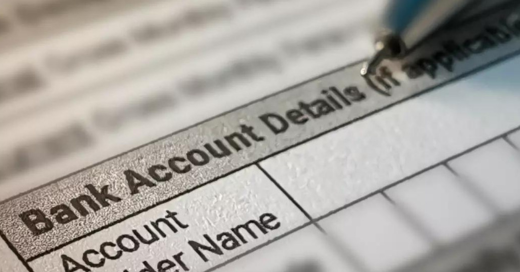What is an offset account?
Table of Contents
ToggleAre you looking for a simple way to save on your home loan? An offset account might be just what you need.
Offset accounts are one of the best ways to cut down on mortgage repayment costs and can potentially help you pay off your home loan sooner. But what exactly is an offset account, and how does it work in Australia? Read on as we explain how this powerful financial tool can help you get ahead with your wealth building goals.
What is an offset account
An offset account is a type of financial product that allows you to reduce the amount of interest paid on your home loan. Essentially, it works by aligning your savings and loan accounts into one, with the funds in the savings account offsetting the balance outstanding on the loan account. As a result, you only pay interest on the difference between the two accounts, which can save you a significant amount of money in interest charges over the life of your loan.
While offset accounts may not be suitable for everyone, they can be a useful tool for those looking to reduce their mortgage repayments and save money over the long term. Consider speaking to a financial professional to see if an offset account is right for you.
How does an offset account work
If you’re in the market for a mortgage, it’s important to understand how an offset account works. Essentially, an offset account is a savings or transaction account linked to your home loan. The balance of this account can then be used to offset the interest charged on your mortgage, potentially saving you thousands of dollars over the life of the loan.
As interest is calculated daily based on the outstanding balance of your loan, having money in an offset account can help to reduce the interest charged on your loan. It’s a fantastic way to make the most of your savings and pay off your mortgage sooner.
However, before you jump in and open an offset account, make sure to do your research and compare the different options available from different lenders to find the best deal for your needs.
What is the benefit of an offset account
An offset account is a type of bank account that can help you reduce the amount of interest you have to pay on a home loan. Instead of earning interest like a regular savings account, the money held in the offset account is used to offset the interest charged on the loan.
For example, if you have a $500,000 home loan and $50,000 in an offset account, you will only pay interest on $450,000 of the loan. This can save you thousands of dollars in interest over the life of your loan. Additionally, because the money in the account is still accessible, you can use it for other purposes as needed.
Overall, an offset account can be a smart financial move for those looking to pay off their home loan faster and save money in the long run.
What is the disadvantage of an offset account?
An offset account certainly has its perks – it allows you to use your savings to offset the interest on your home loan, potentially saving you thousands of dollars in interest payments over the life of your loan. However, it’s not all sunshine and rainbows.
One of the main disadvantages of an offset account is that they typically come with higher fees and interest rates than standard home loan accounts. This means that while you may be saving on interest, you could be paying more in fees and charges, potentially negating any savings you make.
It’s important to carefully consider whether an offset account is the right choice for you, and to shop around to make sure you’re getting the best deal possible.
When to use an offset account and when to consider other options
When looking to save on interest payments and streamline finances, an offset account can be a smart option. By linking a savings or transaction account to your mortgage, you can use the balance to offset the interest charged on your home loan. This means your mortgage interest payment is calculated based on the outstanding loan balance minus the balance in the linked account.
However, it’s important to remember that an offset account may not be the right choice for everyone. Depending on your financial goals and circumstances, other options such as a redraw facility or fixed rate loan may be more suitable.
It’s worth considering your individual needs before making a decision.

Offset account vs. redraw
If you’re looking to pay off your mortgage faster or reduce the amount of interest paid over the loan term, you may have come across the terms “offset account” and “redraw”. While these two options may sound similar, they offer distinct benefits and it’s important to understand the differences to decide which may be right for you.
An offset account is a transaction account linked to your mortgage that reduces the interest paid on the loan by the balance of the account. On the other hand, a redraw facility allows you to access any extra payments you’ve made on the mortgage.
Both options come with their own advantages, and understanding which is best suited to your individual circumstances can be the key to saving thousands of dollars over the life of your loan.
Can I withdraw money from an offset account?
If you’re someone who has an offset account, you might be wondering if you can withdraw money from it. The answer is yes, you can withdraw money from your offset account, but it’s important to understand the ramifications of doing so.
Withdrawing from an offset account will reduce the amount of money that is offsetting your loan, which means that you will be paying more interest in the long run. However, there are situations where it might make sense for you to withdraw money from your offset account, such as if you have an unexpected expense that you need to cover.
It’s important to weigh the pros and cons before making any decisions, and consulting a financial advisor can be helpful in determining what is best for your individual situation.
How much money should I put in my offset account?
Making the decision to put money in your offset account can be a smart financial move. While there’s no one-size-fits-all answer to how much you should put in, there are a few things you can consider.
- First, take into account how much debt you have and what interest rate you’re paying on it. The more debt you have and the higher the interest rate, the more you’ll benefit from having money in your offset account.
- Second, think about your overall financial goals. If you’re looking to pay off your mortgage faster, you may want to consider putting more money in your offset account. On the other hand, if you have other financial priorities, you may want to allocate your money accordingly.
Ultimately, it’s important to weigh your options and choose the strategy that works best for you and your unique financial situation.
Do you pay tax on offset account?
Many people are wondering if they have to pay taxes on their offset accounts. The good news is, generally no!
Tax is not usually payable on the funds held within your offset account. However, there may be some situations where tax is payable, such as if you use your account for investment purposes. It’s important to consult with a financial advisor or the relevant tax authority in your area to ensure that you’re following all the rules and regulations regarding tax and offset accounts.
Overall, the lack of taxes on offset accounts is just another reason why they are such a popular tool for homeowners looking to reduce their interest payments.

Is it better to have money in offset or savings?
When it comes to managing your finances, there are many options available to you.
One common dilemma is deciding between putting your money in an offset account or a savings account. While both options have their advantages and disadvantages, it ultimately depends on your individual needs and financial goals.
An offset account can help you reduce the interest you pay on your home loan, while a savings account can earn you interest on your money. However, it’s important to weigh the benefits versus the fees and requirements associated with each account.
By doing your research and considering your personal situation, you can make an informed decision on where to store your hard-earned cash.
Is an offset account right for you?
If you’re in the market for a home loan, then you’ve likely heard of an offset account as an option for managing your finances. In short, an offset account is a transaction account linked to your home loan, designed to reduce the amount of interest you pay on your mortgage. While an offset account can be a smart financial decision for some, it may not be the right fit for everyone.
Factors such as your financial goals, spending habits, and personal circumstances should all be taken into consideration before deciding if an offset account is right for you.
It’s important to weigh the benefits and potential drawbacks carefully, and speak to a financial advisor if you need further assistance in making an informed decision about your home loan.
Things to consider before setting up an offset account
When it comes to managing your finances, setting up an offset account can be a wise decision. However, before you jump in and open an account, there are certain things you should consider.
- Firstly, assess whether you can afford the minimum balance requirements and any associated fees.
- Then, evaluate the interest rate of your offset account compared to your regular mortgage account.
- And if you’re planning on using your offset account to save for a specific goal, ensure that you have a solid savings plan in place.
By taking the time to carefully consider these factors, you can make an informed decision and potentially save money in the long run.
Tips for making the most out of your offset account in Australia
If you’re a homeowner in Australia, you may have heard about offset accounts and how they can help you save money on your mortgage. But are you using your offset account to its full potential?
- First, it’s important to understand how it works. Essentially, an offset account is a transaction account that is linked to your home loan. Any money you deposit into the account offsets the balance of your mortgage, which reduces the amount of interest you have to pay.
- To make the most out of your offset account, it’s important to regularly deposit any extra funds you have, such as your tax refund or a bonus from work.
- You should also consider making your salary payments directly into your offset account, which can help you save even more on interest.
By following these tips, you can take full advantage of your offset account and potentially save thousands of dollars in interest charges over the life of your mortgage.

Offsetting your mortgage can be a great way to save money, especially for those looking for financial wiggle room. While this strategy is not always recommended, as it depends on personal circumstances, an offset account can be a great option for some.
Ultimately, whether or not an offset account is right for you comes down to understanding your own objectives and circumstances. Take into account all the considerations discussed in this blog post and decide what works best for you.
Before committing to an offset account make sure that you understand the terms of your agreement and know the laws surrounding offsets in Australia.









